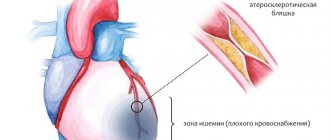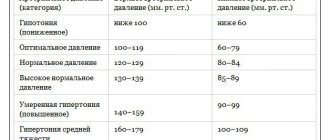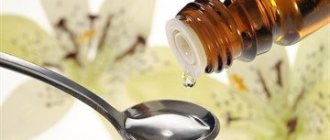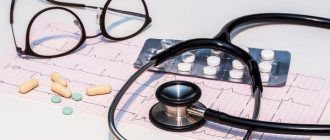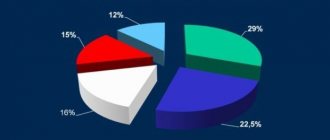Hypertensive crisis is a sharp rise in blood pressure, causing nausea, headache and other unpleasant symptoms. The main danger of these attacks is possible complications that can occur as a result of disruption of the blood supply to the brain and the functioning of the nervous system as a whole. It is important to immediately stop the attack, and for this you should know what drugs are used for a hypertensive crisis.
It is worth noting that most remedies for quickly relieving high blood pressure can only be used by emergency doctors. They should not be used independently, especially if the attack occurs for the first time. Otherwise, you can only do harm and seriously worsen the patient’s condition.
Important! In case of severe hypertensive crisis, you must immediately call an ambulance.
How to choose a medicine during a crisis
Drugs to relieve a hypertensive crisis are prescribed by the attending physician according to indications. To prescribe medications for a hypertensive crisis, it is necessary to conduct an examination, diagnosis, and identify the cause of the pathological condition. Incorrect therapy can worsen the patient's condition.
To prescribe medications, the doctor talks with the patient, finds out basic information about the current condition and the factors that caused it. Main questions:
- what symptoms accompany a hypertensive crisis;
- what stage of hypertension does the patient have;
- are there any other concomitant diseases;
- whether heart problems have been identified;
- what the patient eats;
- Are there any abnormalities in the functioning of the kidneys?
Answers to these questions will help the doctor quickly identify the cause of the increase in blood pressure, which led to a hypertensive crisis.
Patient with hypertensive crisis
The drug used for hypertensive crisis should lower blood pressure. This is the main goal of the doctor when a patient is admitted. In the future, he will be prescribed complex therapy aimed at curing the root cause, if it is caused by internal factors, and adjusting his lifestyle.
Before the ambulance arrives, the patient can be given antihypertensive drugs at home to lower blood pressure, but only if they were previously prescribed by the attending physician. Self-medication with medications is excluded. This can be dangerous for the patient's unstable condition.
Why is a hypertensive crisis dangerous?
A hypertensive crisis is an exacerbation of hypertension. A sharp jump in pressure has a detrimental effect on the condition of the entire body. If a person does not receive help, he may have a stroke or heart attack.
The very presence of an attack indicates that the person has serious health problems that require increased attention. If hypertension is not treated, the patient's condition will continue to worsen. It will become critical after a hypertensive crisis. With such a diagnosis, you need to be under the supervision of a doctor. When he understands what exactly is bothering the patient, he will prescribe the necessary medications that will help avoid repeated surges in blood pressure.
A hypertensive crisis can provoke a stroke, the consequences of which are loss of speech, paralysis and even death
Medicines for uncomplicated HA
In modern medicine there are many drugs for the treatment of uncomplicated hypertensive crisis. They are divided into different pharmacological groups of drugs intended for different ages and pathogenesis. For a mild form of the disease without internal organ damage, the following is prescribed:
- calcium antagonist Nifedipine;
- ACE inhibitor Captopril;
- alpha adrenergic agonist Clonidine;
- ACE inhibitor Capoten;
- alpha-adrenergic agonist Physiotens;
- diuretic Furosemide;
- vasodilator Magnesium sulfate;
- alpha-adrenergic agonist Moxonidine.
The dosage, duration and order of administration will be prescribed by the attending physician. Before use, you must read the instructions for use, the list of contraindications and adverse reactions.
The patient’s condition, improvement in well-being, rate of pressure reduction, and progress in relieving the crisis depend on the correct selection of medication for a hypertensive crisis. The tablets will help prevent increased blood pressure in the future.
Nifedipine
The medicine is produced in tablet form. Tablets are prescribed for hypertensive crisis. They relieve vascular spasms, lower blood pressure, and reduce the load on the heart.
The treatment regimen is determined by the doctor. The short-acting drug must be taken three times a day. To relieve an acute condition, you need to put one tablet under the tongue and completely dissolve. For speed of action, the tablet can be chewed. The maximum daily dose is 4 tablets.
The medicine is taken over a long period of time. The tablets are not addictive, the risk of adverse reactions in the body is minimal. Adverse reactions include hyperemia. This reaction occurs with increased sensitivity to calcium ions.
The price for Nifedipine in a pharmacy is 30-40 rubles.
Nifedipine is used to relieve acute conditions
Captopril
This is the first medication from the group of ACE inhibitors, which began to be used for the treatment of hypertensive crisis. The effect of the medication extends to the functioning of the heart: the drug reduces the beating frequency of the heart muscle during an acute condition and slows down blood flow. Captopril lowers the level of the enzyme angiotensin in the blood, which causes vasoconstriction. Due to the action of the medication, blood pressure decreases.
You need to take the product 2 times a day, 1 tablet. The medicine is taken before meals. Captopril tablets are freely available at pharmacies and can be purchased without a prescription.
Taking the medication may lead to the development of adverse reactions. Most often, adverse reactions are observed in adolescents, women during pregnancy, patients with diabetes, and autoimmune diseases.
The price of Captopril is 10-15 rubles.
Clonidine
The medication is produced in three forms: drops, tablets, solution for injection. The main active ingredient of the drug is Clonidine. The remedy for stopping a crisis is taken orally or parenterally (injections and droppers).
The drug affects nerve cells that send signals to the blood vessels. When the blood vessels relax, the pressure decreases, and the patient's condition noticeably improves.
For mild forms of the disease, the doctor prescribes 0.3 mg of the drug 3-4 times a day. If the drug is used as an injection, 0.5-1.5 ml of solution will be required.
Taking the medication causes withdrawal syndrome, which is expressed in a number of characteristic adverse reactions of the body. The course of taking the drug should be completed gradually.
Patients with impaired renal and pulmonary function need to take the drug with extreme caution, since taking the medication can cause nettle fever, dizziness and vomiting.
The price of Clonidine is about 40 rubles.
Clonidine is sold in pharmacies with a doctor's prescription
Kapoten
If there is a slight increase in blood pressure, the doctor prescribes Capoten. The drug has a positive effect on the functioning of the heart and blood vessels. It causes few adverse reactions and is well accepted by patients. Suitable for relieving hypertensive crisis.
You need to take the product 2 times a day, 1 tablet. The drugs are taken before meals.
The price for Kapoten in a pharmacy is about 175 rubles.
Physiotens
The medicine is produced in the form of tablets. It has a positive effect on brain stem receptors, reducing vascular resistance, normalizing blood pressure.
The medication is well tolerated by patients, causes minimal side effects, and has virtually no contraindications. The product is allowed to be taken by patients with diabetes, excess weight, and allergies.
Disadvantages include low effectiveness in the later stages of hypertension. It is prescribed for the initial form of the disease. To increase effectiveness, doctors prescribe it in combination with other antihypertensive drugs.
The recommended daily dosage is 0.2 mg per dose. The final dose and frequency of administration is determined by the attending physician.
The average cost is 270 rubles.
Furosemide
To lower blood pressure and during a hypertensive crisis, drugs from the group of diuretics are used. Such effective drugs with a fast-acting diuretic effect include Furosemide.
The drug removes excess water from the body, washing away salt. The volume of circulating blood decreases, which leads to normalization of blood pressure.
It is recommended to take the drug in the morning. The daily dosage depends on the age of the patient. The recommended dose is 1-2 pieces.
The drug cannot be combined with aminoglycosides, as Furosemide increases their toxicity.
Diuretics are recommended to be taken with extreme caution in patients with kidney failure.
The cost of the drug at the pharmacy is 20-30 rubles.
Furosemide belongs to the group of diuretics
Magnesium sulfate
Magnesia quickly dilates blood vessels, so doctors prefer to use the medication more often than other drugs during a hypertensive crisis. The drug relieves vascular spasms, reduces the degree of platelet aggregation, normalizes heart rhythm, and has a diuretic effect.
The drug for removing blood glucose is sold in the form of an injection solution.
To lower blood pressure, the doctor injects 10 ml of the drug intramuscularly at a concentration of 25%. Often the drug is mixed with analgesics, since the injection is quite painful.
The drug is mainly administered intramuscularly; the drug can be administered into a vein in the form of Magnesia droppers if the patient is admitted to the hospital in critical condition. For emergency hospitalization, the dose is 20 ml intravenously.
The drug is contraindicated in case of respiratory diseases, kidney failure, or increased sensitivity to the components of the drug.
The price is 20 rubles.
Moxonidine
Moxonidine is called emergency tablets because they have a quick effect. The effect of taking one tablet lasts for 6-12 hours. The recommended dose is 2 mg per day.
The drug quickly reduces blood pressure, so it is prescribed for acute conditions to prevent relapse.
The medicine is well accepted by patients without causing severe adverse reactions. Elderly patients, patients with diabetes, and those with impaired renal function can take the tablets.
The price is 150 rubles.
Moxonidine quickly reduces blood pressure
Non-drug treatment of hypertension
The patient should closely monitor his health and blood pressure levels. By normalizing the diet and its regime, it will help restore the body. To do this, you need to reduce the consumption of table salt, animal fats, eat plant foods rich in potassium, calcium, magnesium and other microelements. Such patients are recommended to eat fish at least twice a week and a large amount of vegetables and fruits.
In order to normalize your blood pressure, you need to follow the rules:
- Moderate and regular physical activity;
- Reducing the amount of salt in food;
- Rejection of bad habits;
- Losing excess weight.
Non-drug treatments for hypertension help prevent the formation of any complications and also increase the effectiveness of antihypertensive therapy.
Medicines for hypertension and blood pressure should be selected on an individual basis. This requires consultation with a general practitioner. Author of the article Svetlana Anatolyevna Ivanova, general practitioner
Tablets for complicated HA
In a complicated form of hypertensive crisis, it is more difficult to normalize the condition. A sharp increase in arterial values to critical values can quickly lead to disturbances in the functioning of internal organs. Target organs are especially affected: the brain, heart, blood vessels. In the complicated form, drugs that quickly reduce blood pressure are needed.
First aid medications include:
- Nitroglycerine;
- Labetalol;
- Hydralazine;
- Sodium nitroprusside.
Nitroglycerine
The drug is produced in the form of tablets, capsules and drops. All types of medication are taken orally. For emergency help, you need to take the medicine in the form of drops. Two drops are placed under the tongue or dripped onto a sugar cube that needs to be dissolved. The maximum daily dosage is 16 drops. A single sublingual dose for hypertensive crisis should not exceed 4 drops. The tablets are also taken sublingually: placed under the tongue until completely dissolved.
The drug has no contraindications, but taking it can cause a number of adverse reactions. Side effects are usually caused by improper administration, non-compliance with the treatment regimen or dosage.
The price is 20-100 rubles.
Labetalol
A drug from the group of hybrid adrenergic blockers. The drug of choice is prescribed for any form of GC. To restore blood pressure, the patient is prescribed 1 tablet or 4 drops twice or thrice a day. The more severe the condition of a hypertensive patient, the higher the single dosage. The maximum daily dose is 600-1000 mg.
The drug has no adverse reactions, but is contraindicated in patients with asthma.
The drug is sold at a price of 170-200 rubles.
Labetalol is a fast-acting drug
Hydralazine
The drug reduces vascular tone, improves blood supply to tissues and organs. The medicine normalizes the condition of severe patients after a heart attack or cerebrovascular accident.
The medication is prescribed after meals, 10-25 mg four times a day. The maximum dosage is 100-200 mg. The drug is intended for monotherapy. In combination with other drugs, there may be an overdose with adverse reactions.
The drug is sold in pharmacies with a prescription. The price is 80 rubles.
Sodium nitroprusside
The drug is produced in the form of capsules and solution for injection. The medicine reduces vascular tone and relaxes the smooth muscles of the veins. The drug reduces the need for oxygen in the myocardium and cardiac muscle and increases contractility during oxygen starvation.
The solution must be prepared immediately before administration. To do this, the ampoule with the solution is mixed with dextrose. The diluted product is stored for a day. The solution in its pure form is not suitable for the treatment of hypertensive crisis.
Sold in a pharmacy with a prescription. The price is 220 rubles.
Types of crises
All types of this disease are usually divided into two large classes (groups):
- Complicated or life-threatening crises.
- Uncomplicated or non-life-threatening crises.
| Life-threatening crisis | Non-life-threatening crisis |
| It is often accompanied by dangerous complications, with increased damage to target organs and their condition worsening. In this case, an urgent reduction in blood pressure is required. It is important to observe the degree of pressure reduction and adhere to certain tactics, which will depend on the existing damage to target organs and their condition. A hypertensive crisis is called complicated if a sharp rise in pressure is accompanied by: · Stroke in the GM; Acute left ventricular failure; · Acute coronary syndrome; · Dissecting aortic aneurysm; · Preeclampsia and eclampsia in pregnant women; | Despite the obvious clinical symptoms, it is not accompanied by any disturbances in the functioning of target organs (heart, kidneys, retina or brain). |
Do they install IVs?
With a weak form of HA, doctors recommend taking antihypertensive drugs in the form of tablets or capsules. For severely ill patients, doctors place an IV. In tablet form, the drug acts more slowly than invasive use of the drug. The drip is placed intravenously. The doctor selects the drug.
Patients in serious condition are given IVs
Medications
When treating this disease, parenteral drugs are prescribed:
- Vasodilators:
- The drug "enalaprilat" (identified acute left ventricular heart failure);
- The drug "nitroglycerin" (also acute heart failure and ACS);
- The drug "nitroprusside" (identified hypertensive encephalopathy).
- Beta blockers. These include drugs: metoprolol and esmolol. They are taken for dissecting aortic aneurysm, as well as ACS.
- Antiadrenergic drugs. The drug phentolamine for pheochromocytoma.
- Antipsychotic drugs. The drug droperidol.
- Diuretics. The drug furosemide for signs of acute heart failure (left ventricular).
- Ganglioblockers. Pentamin drug.
If the acute clinical picture is not recorded and there are no complications, the drug captopril is prescribed (level B). It is taken orally or sublingually (12.5-25 mg).
If there is a sharp increase in blood pressure and a jump in tachycardia, beta blockers are prescribed. It is advisable to choose a medicine with properties similar to the vasodilator drug.
It is important to understand that medications for a hypertensive crisis should be prescribed by a doctor after examination.
To improve the patient's condition and strengthen the therapeutic effect, long-acting medications are used, such as dihydropyridine or amlodipine (5-10 mg). Normalization of blood pressure levels is achieved within 24 hours.
The decrease in pressure should occur by no more than 20% of the current blood pressure level. If the patient feels better, it is worth putting him in bed with the head of the bed raised. Further steps to treat the crisis should be discussed with your doctor.
Why use Corvalol
The sublingual drug Corvalol reduces the contractility of the heart, restoring normal blood circulation. The drug contains peppermint, which relieves vascular spasms, normalizing the general condition of the patient with high blood pressure.
The medicine is placed under the tongue at the first signs of HA. The effect of one tablet lasts for 3-6 hours.
Self-medication during a hypertensive crisis is excluded; therapy is selected exclusively by the attending physician. A patient with high blood pressure can only be given first aid and call an ambulance.
First aid
So, here is a patient who has had a hypertensive crisis. Before you shove handfuls of pills, tablets and powders into his mouth, care should be taken to reduce the threat to the person's health.
- First of all, call an ambulance. No amount of friendly or neighborly treatment can replace an examination in a treatment room. Therefore, never rely on your own strength in such cases.
- It is very important in this situation to calm the person and help him relax. Especially if a hypertensive crisis is caused by a stressful situation or experiences. A few glycine or valocordin tablets can help out here. But don't overdo the latter.
- Make sure that the patient is in a semi-recumbent position. You can place several pillows under his head and back. But make sure that your head is slightly thrown back: this will allow blood to flow better to the brain.
- Before the doctor arrives, measure your blood pressure every quarter of an hour and write down the result. In the future, this may help doctors better adjust the course of treatment.
- Make sure the area is well ventilated. If a person has difficulty breathing, unbutton his shirt and remove any clothing that is constricting his chest.
- If you feel the patient is hot, you can apply a piece of ice or something cold to the back of the head.
- If the patient is thirsty, convince him to endure his thirst. During a hypertensive crisis, water can cause vomiting, which will lead to an increase in blood pressure.
- And, of course, do not forget to give medications to treat hypertensive crisis. If the patient knows about his illness, he should probably have a hypertensive kit with him for such cases.
We will talk about the last point in more detail in subsequent sections.
